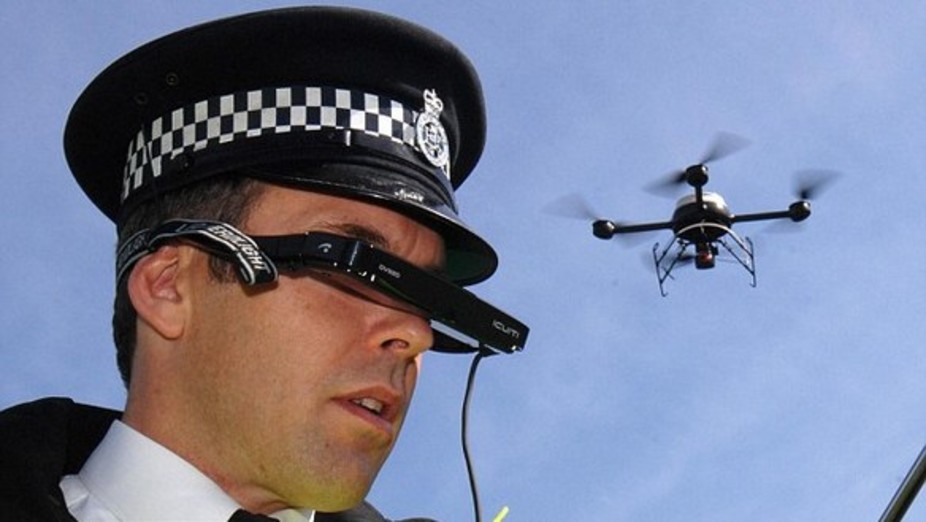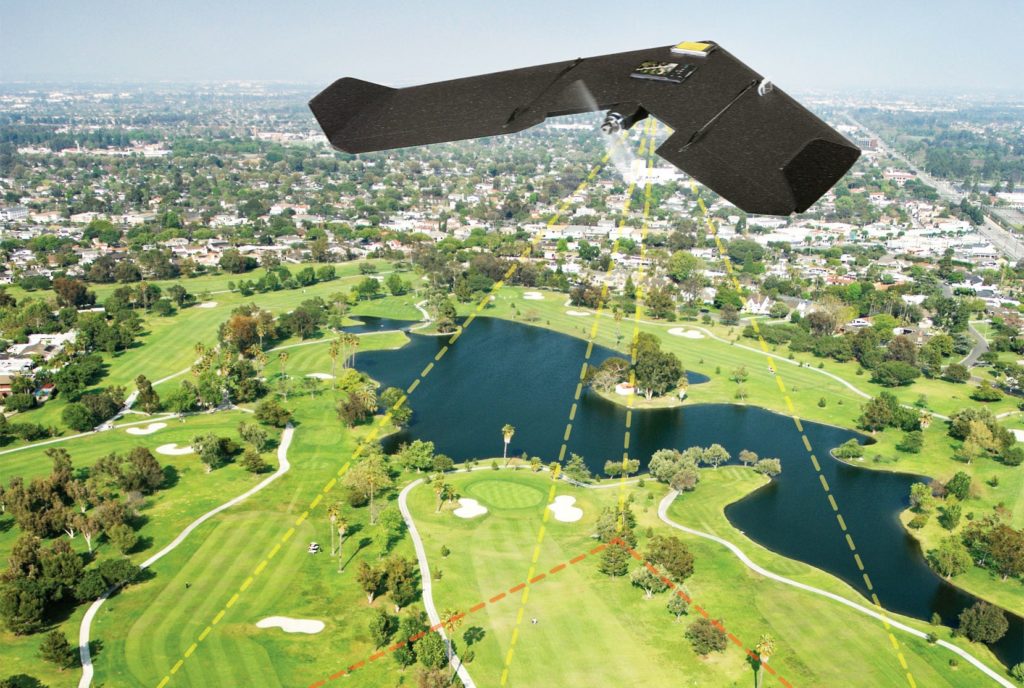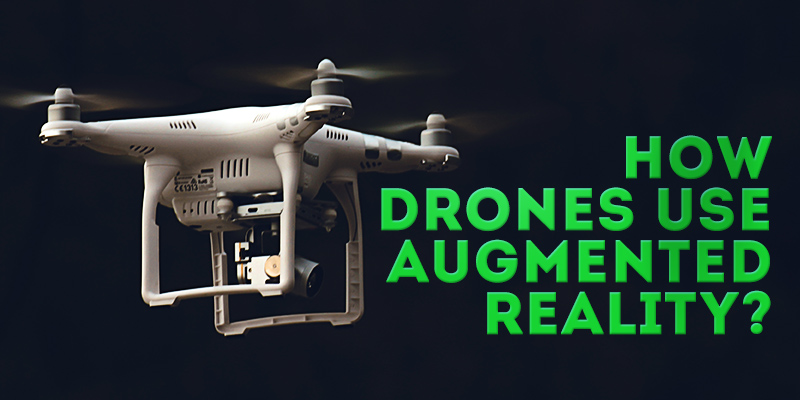The drone industry has barely taken off, but augmented reality technology is already changing the way drones are used for work and play. But why should we be surprised? The power of AR to layer images and data over top of real-world video has already proven its value on the ground, with projected market earnings upwards of $56.8 billion by 2020. It is only natural that augmented reality would take to the skies.
Drones are rapidly finding growing applications in business, but the merger of augmented reality and drones presents exciting opportunities across a wide range of industries. Here, we will look at a few of them to see what changes lie ahead and how developers can capitalize on them.
How Drones Use Augmented Reality
Before we see how the drone industry is benefiting from AR, a brief overview of how the two technologies come together may be in order.
Before AR, the only way to spice up a flight was to attach a video camera to the unmanned aerial vehicle (UAV), or buy a drone with a camera already built in. Drone video systems could record video and store it onboard for playback after landing, or video could be transmitted to the ground in real-time for viewing on an analog video monitor. More recently, video could be viewed using a cell phone or tablet.
With AR, cell phones can still be used for viewing real-time video, and so can AR viewers, such as the Microsoft HoloLens or Epson’s Moverio augmented reality glasses. Rather than seeing only the raw video as captured by the drone camera, AR overlays digital images and data over the raw video image. No doubt, the gears in your head are already turning as you contemplate the possibilities. And, indeed, they are thrilling.
Gaming
Of course, the gaming industry has captured the opportunity to enhance drone gameplay through adding AR gamescapes. Or, should we say it has enhanced drone gaming by adding AR? Either way, Air Hogs — no surprise, here — has not left their fans empty-handed. The Air Hogs Connect Mission Drone challenges players to fly drone rescue missions through an interactive AR city under siege. The city is simulated and viewed on a remote device, but the rescue missions are real enough to provide endless entertainment.
Although Air Hogs’ foray into AR shows how the big boys do it, by no means are startups or smaller companies disadvantaged in this new frontier. There is plenty of opportunity for crafty and talented developers to steal the show with unique and exciting new games of their own.
Firefighting
Boeing subsidiary Insitu is exploring ways to use AR-enabled drones to help firefighters combat wildfires. Insitu’s ScanEagle drone not only allows firefighters to maintain an aerial view of wildfires for up to 24 hours per flight, but an advanced thermal camera can see what the naked eye cannot, such as hot spots and temperature variations. More to the point, the ScanEagle platform uses AR to superimpose important data over the video image, such as a high-resolution digital terrain model and a 3D hologram of the fire.
The ScanEagle is not only a great example of AR drone technology put to practical use to solve a problem, but it also demonstrates how new AR drones can be integrated with existing viewers, thereby avoiding the cost of viewer R&D — the ScanEagle utilizes the Microsoft Hololens.
Disaster Response
AR is paying for its flight ticket by helping to save lives and assist in disaster response. Rapid Imaging Software, Inc. has shown the value in using AR to show what disasters can hide. In this case, they equipped a drone with SmartCam3D and provided video of a flood region with the location of flooded streets made visible by AR overlays.
This relatively simple, yet powerful, example of AR drone technology is only the beginning. Concerning future AR drone applications for assisting in disaster response, the sky is literally the limit.
Law Enforcement
Some police agencies have already embraced AR as a new tool in their never-ending fight against crime. AR applications are used to help officers locate streets and buildings, to aid in navigating traffic, and to provide situational awareness data to special operations (S.W.A.T.) teams.
AR drones can help agencies even further. Here are a few areas where development in AR drone technology will be much welcomed by law enforcement agencies around the world.

Augmented Reality Drones for Police.
Source: theconversation.com
Patrol
Information is crucial to the safety and effectiveness of the patrol officer. AR drones can provide aerial video of a surveillance scene — viewable on the officer’s smart glasses — while the officer keeps his eyes trained on the scene from his ground location.
Search and Rescue
Any drone with a camera can help rescuers search for missing children, or persons who may have been injured in a disaster. The power of AR to overlay streets, landmarks, and even GPS coordinates can help rescuers identify where a person is located when natural or other disasters have left the landscape buried by collapsed buildings or other debris.
Fugitive Apprehension
By using night vision or infrared cameras, a drone can help officers spot suspects hiding in total darkness. Add to that current technology the ability to overlay landmarks and streets, and officers can identify the location of suspects quicker and more accurately.
Engineering
New technology has always been quickly embraced by engineers of all disciplines. Drones are no different. Engineers from a variety of industries are already using drones to make their work easier or to be more effective. However, AR technology will greatly enhance growth opportunities in this space in the near future, and for many years to come.
Civil Engineering
Civil engineers have found drones useful in a number of ways, from inspecting bridges to assessing the geography surrounding a project.
AR can be a tremendous aid by showing the location of buried water lines, gas lines, and electrical lines as a project is being planned. The overlay data can be added in real-time, or added later to recorded flight video.
By providing real-time GPS data, an AR drone can provide accurate measurement data that would take much longer to collect from the ground.
Construction
Architects, engineers, site foremen, and planners already use AR to help make accurate measurements, to help visualize the various phases of a project beforehand, and to create 3D models of components that will be needed for a project. Putting this capability in the air turns pseudo-3D perspectives into true 3D views. With the right software, an augmented reality drone could, conceivably, allow a complete fly-over of a bridge, water treatment plant, or other structure before it has been built. The knowledge gained from such early perspectives can help reduce mistakes and speed project development.
Surveying
It should come as no surprise that surveyors have found it much easier to do some of their work from the sky, rather than on the ground. Drones are proving themselves as useful tools to surveyors by creating high-resolution images of survey areas. But that’s only half of what they need. They must then use software to add digital geo-referenced data to an image or video, and to produce useful map data. Augmented reality can supply the missing piece of the puzzle and superimpose accurate survey data directly over the real-time video, or later if desired.

AR drones for Surveying.
Source: Buildingservicesinfo.com
The Future of Augmented Reality and Drones
While both drones and AR are both well beyond their infancy, it is too early to say exactly how the merging technologies will ultimately merge together. Will AI and big data become a part of the picture? Most certainly. Will the AR drone industry inspire heads-up wearable AR displays designed specifically for UAV’s? You can count on it. Can we expect to see AR drone startups populate the development landscape? It is already happening.
Regardless, one thing is certain — the two emerging technologies will present exciting and lucrative opportunities for visionaries smart enough to invest in them.
The Bottom Line
The potential of AR to transform the drone industry is quickly being realized, and other industries are being transformed as a result. Quite possibly, the marriage of augmented reality and drone technology will spawn entirely new industries yet unfathomed. It isn’t a question of whether AR-enabled drones will become a market unto themselves; the only question, is who will dominate that market?
Success in the new field of AR-equipped drones will require a mastery of augmented reality technology, augmented reality app development, and not a little bit of creativity. To pull it off, you must either possess the technical resources in-house, or you must hire outsource to a competent developer. While the U.S. boast top-notch developers, they tend to work at premium rates. One alternative is to explore Western-European developers who have experience in augmented reality and mobile app development.
Augmented reality app development costs will vary by project complexity, and by developer.


Great Post! Drones can do much more than we think. People are having various misconceptions about drones that they are limited to delivery services or can be used as toys or can be used in photography. Reality is that, drones are being used in many creative and useful ways as mentioned above.
I am a futurist and I always get excited when something remarkable is going to be happen in this rapidly growing tech world … They are going to be in use in all types of engineering - mechanical, electrical, construction engineering, manufacturing. I was prepared for this since my first breathe on this planet 🙂 … Augmented Reality and drones will merge their technologies in the near future for the full excitement and that will bring a lots of opportunities for the people that will use these technologies!